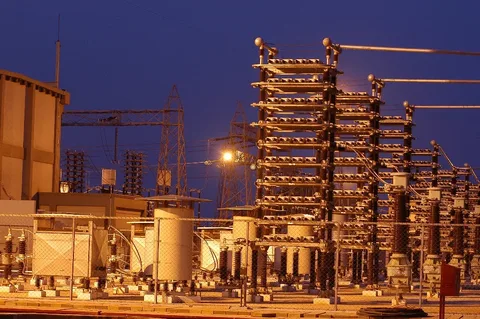Connecting Renewables with HVDC Technology Across the US

Introduction
The US HVDC (High Voltage Direct Current) Converter Station Market is gaining rapid momentum as the nation modernizes its transmission infrastructure to accommodate renewable energy integration and long-distance power transfer. HVDC technology enables efficient and low-loss electricity transmission over large distances, making it essential for connecting offshore wind farms, remote solar plants, and interregional power grids.
Market Drivers
The increasing demand for reliable and efficient long-distance power transmission is a major growth driver. Rising renewable energy installations, especially offshore wind and large-scale solar projects, are fueling HVDC adoption. Government initiatives promoting grid modernization, along with investments in interconnection projects between regional grids, further accelerate market expansion.
Market Challenges
High initial capital investment, complex installation procedures, and long project approval timelines pose significant barriers to market growth. Technical challenges related to system compatibility with existing AC grids and limited domestic manufacturing capacity for HVDC components also hinder progress. Moreover, regulatory uncertainties and right-of-way issues can delay project execution.
Market Opportunities
Growing focus on renewable energy corridors and interstate transmission projects opens strong opportunities. The development of flexible, modular multilevel converter (MMC) technology enhances operational efficiency and scalability. Public-private partnerships and federal funding for decarbonization initiatives are expected to boost deployment across the US, especially in regions with high renewable potential.
Regional Insights
The Western and Midwestern regions are leading the adoption of HVDC systems due to large renewable energy resources and interconnection needs. The Northeast is seeing rising investment in offshore wind HVDC links, while the Southwest is exploring new corridors for solar energy transmission. Texas and California continue to drive technological innovation and pilot-scale HVDC infrastructure.
Future Outlook
The future of the US HVDC Converter Station Market lies in digitalized and modular systems integrated with AI-driven grid control. Advanced converter technologies will enable hybrid AC/DC grids, ensuring improved power stability and reduced losses. By 2035, HVDC systems will play a key role in achieving the country’s clean energy and net-zero transmission goals.
Conclusion
The US HVDC Converter Station Market stands at the forefront of the nation’s clean energy transformation. With growing renewable capacity and the need for high-efficiency transmission, HVDC technology is becoming a strategic necessity for future grid reliability and sustainability.
- Art
- Causes
- Crafts
- Dance
- Drinks
- Film
- Fitness
- Food
- Games
- Gardening
- Health
- Home
- Literature
- Music
- Networking
- Other
- Party
- Religion
- Shopping
- Sports
- Theater
- Wellness



